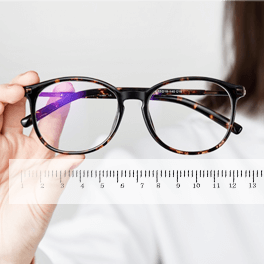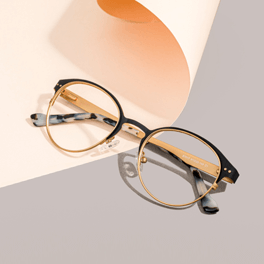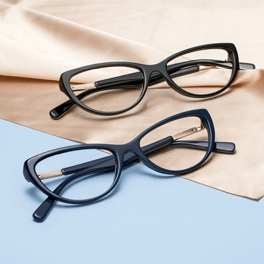FAQ
Quick Links
Pupillary Distance (PD)
Pupillary distance is short for PD. It is the distance between the center of your two pupils in millimeters. Your eye care provider will usually measure your PD during an eye exam.
PD measurement determines where you will look through the lenses and should be as accurate as possible.
The average adult's PD is between 54-74 mm; kids' are between 43-58 mm.
You can get your PD from your eye care provider, or you can measure it yourself.
Eye care providers should list your PD when they fill out a prescription for you. It is the key to have accurate PD measurement, especially if you intend to get progressive lenses. There are several ways to get PD measurement.
1.To ask your eye care provider to double-check the measurement.
2.To measure it yourself with a mirror and millimeter ruler. (Check out the guide)
3.To have a friend to measure it with a millimeter ruler. (Check out the guide)
Pupillary distance is short for PD. It is the distance between the center of your two pupils in millimeters. Your eye care provider will usually measure your PD during an eye exam.
Eye care providers usually list the PD when filling out a prescription for you. If it's not there, you can still measure it on your own. Prepare yourself a mirror, a millimeter ruler, and follow the steps below.
Get a printable millimeter ruler if you don't have one.
Step 1: Stand 8 inches (20 cm) away from the mirror.
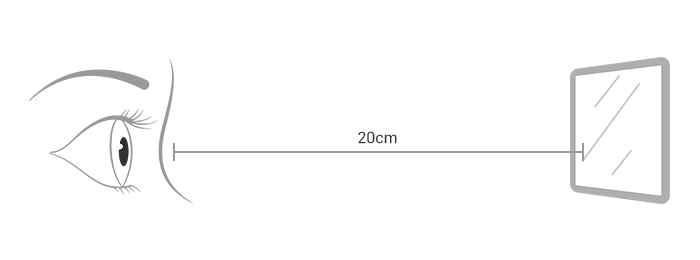
Step 2: Hold the ruler against your eyebrows, with your face straight.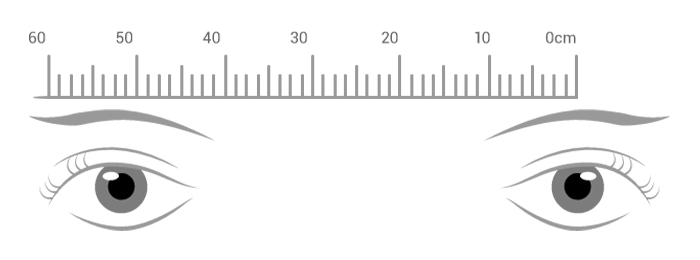
Step 3: Close your right eye and align the ruler's 0 mm to the center of your left pupil.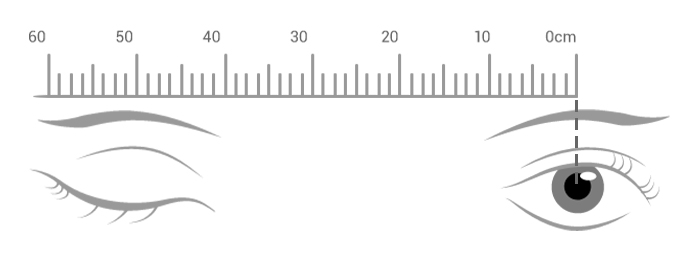
Step 4: Look straight. Close your left eye and open your right one.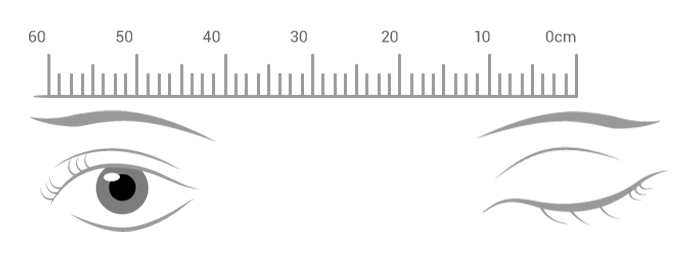
Step 5: Read the mm line that lines up with the center of your right pupil. This number is your PD.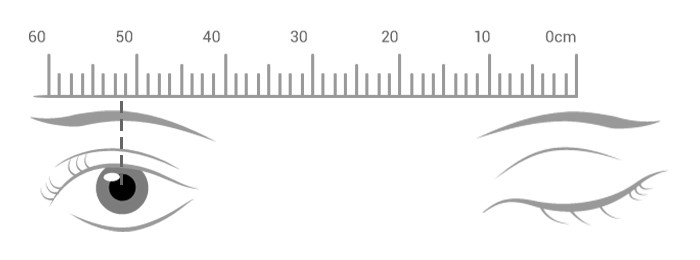
Note:
• Repeat three times for accuracy
• Range of Adult PD: 54-74 mm
• Range of Child PD: 43-58 mm
You might find it easier to ask a friend to help you measure your PD. Stand still with your both eyes open and let your friend do the job!
Get a printable millimeter ruler if you don't have one.

Step 1: Have them sit or crouch while you stand, so they are out of your field of vision.
Step 2: Keep your eyes still and look above them at something approximately 10-20 feet away.
Step 3: Have your friend put the ruler's 0 mm over the center of one pupil, then measure the distance to the center of the other pupil.
Your PD number will be in the "PD" or "Pupillary Distance" section of your eyeglass prescription.
It is often separate from the other parts of your prescription.
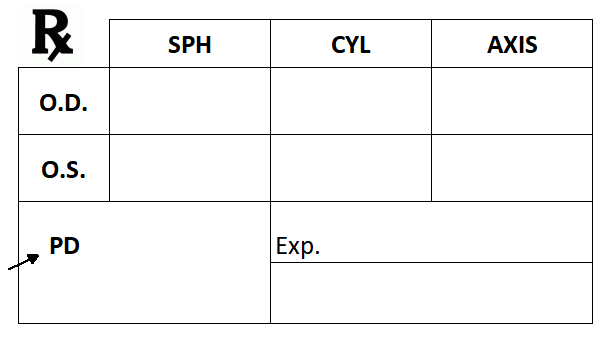
There wouldn't be a specific section for PD measurement on the prescription sometimes.
Therefore, eye care providers usually write out the PD number without any remark like this.
To make sure you get the best vision of your new eyeglasses, you might need to contact your eye care provider to double-check it.
Note:
• Range of Adult PD: 54-74 mm
• Range of Child PD: 43-58 mm
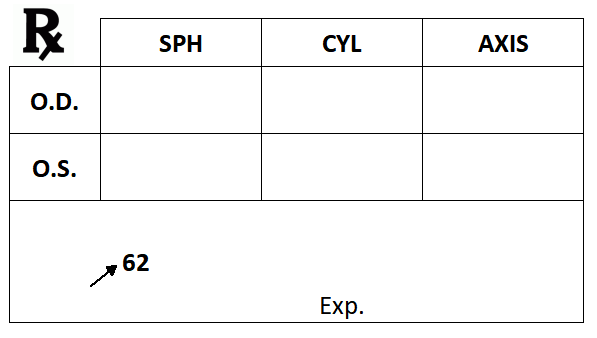
It usually happens when your eye care provider measures your PD as the dual pupillary distance, which is the distance in millimeters from each eye's pupil to the center of your nose.
It is often written such as "31/32" on your prescription.
If it looks like this, one thing you should know is that the first dual PD number "31" is always your right PD, the distance in millimeters from your right eye's pupil to the center of your nose.
The dual PD number "32" is your left PD, which is the distance in millimeters from your left eye's pupil to the center of your nose.
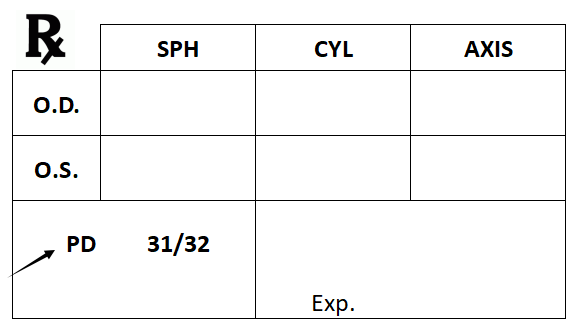
You need to click "Two PD numbers" button first and select the exact dual PD numbers when filling in the prescription form.
Note:
• Range of dual PD: 22-40mm

Or it happens when your eye care provider measures your two different types of PD, distance PD and near PD.
It's usually written such as "62/59" or "Distance PD: 62 & Near PD: 59".
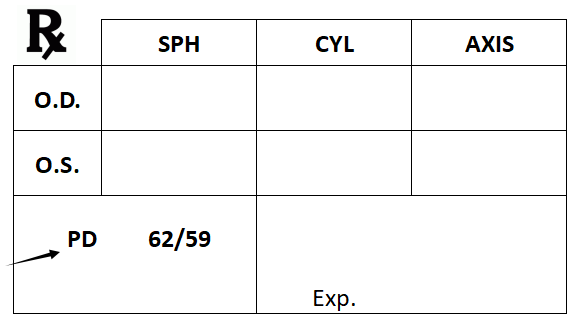
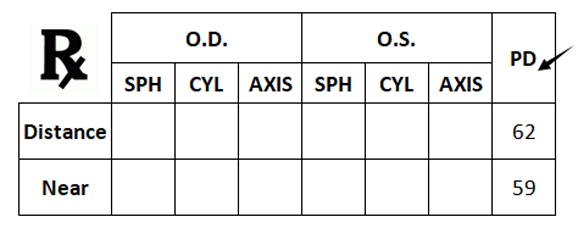
If it looks like this, the PD number you fill in varies according to how you use your eyeglasses for.
If they're used for DISTANCE, seeing things far away, your distance PD is necessary.
But if they're used for READING, seeing things up close, your near PD is necessary.
If you need multifocal lenses (progressive or bifocal) for your eyeglasses, your distance PD is essential.
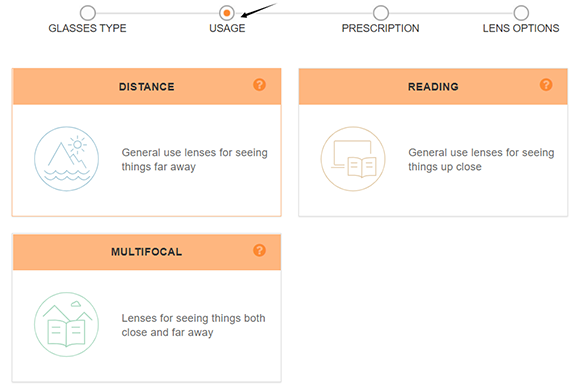
Note:
• Range of Adult PD: 54-74 mm
• Range of Child PD: 43-58 mm
You might be confused about it when you don't know well about PD measurement and prescription.
If so, welcome to contact us at any time. We are pleased to assist you with it.
Yes. PD measurement determines where you look through the lenses and should be as accurate as possible.
Yes. Your PD should be as accurate as possible when buying new glasses. The exact PD measurement will get you the best vision of the glasses.
Your vision centers on a small section of the lenses, so an exact PD measurement is needed to shape the lenses to suit your needs. If it is off, your lenses wouldn't be centered correctly. It may cause discomfort, eye strain, and blurred vision. A small margin of error might not cause problems, but it's better to be as accurate as possible.
Once one has experienced puberty and is a full-grown adult, their PD typically will not change. PD is very consistent throughout an adult's life except for some rare reasons.
You usually can't find your PD on your glasses but your prescription. The numbers on the inside of the temple arms show the measurements for the frame itself.
No, PD doesn't change the frame size. But the PD measurement does influence your vision clarity and the center of your lenses where you look through.
Single PD is the distance in millimeters between one eye's pupil to the other.
Dual PD is the distance in millimeters from each eye's pupil to the center of your nose.
A single PD measurement is one number written in the PD section on your prescription like "62".
Dual PD measurement includes two numbers for different eye written as "31/31" or "OD PD: 31/OS PD: 31" which indicates that "right PD: 31/left PD: 31" ("OD" represents right eye and "OS" represents left eye).
Note:
• Range of Adult single PD: 54-74 mm
• Range of Child single PD: 43-58 mm
• Range of dual PD: 22-40mm






